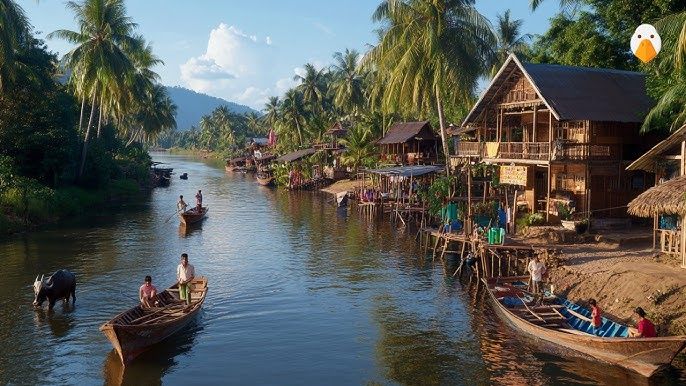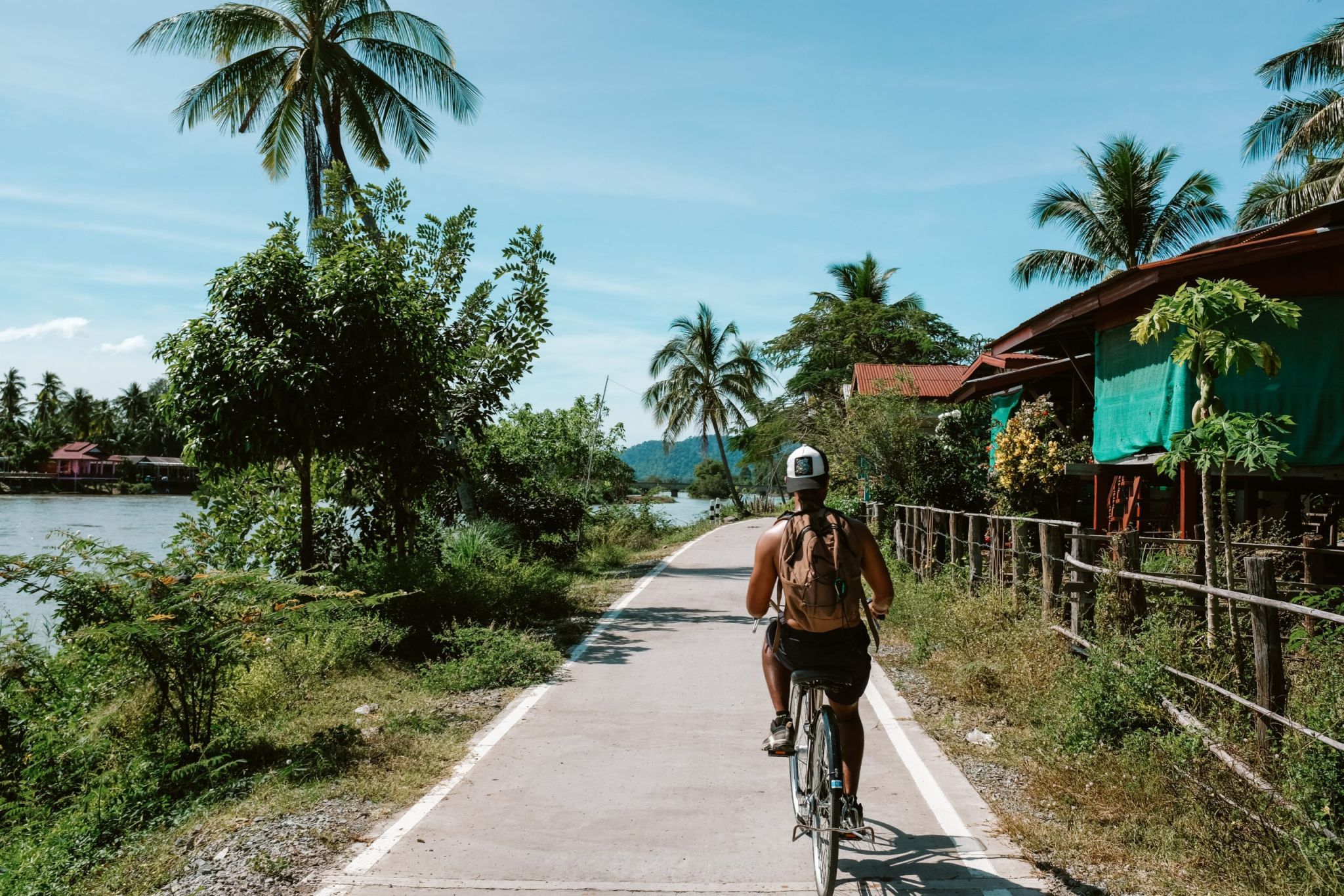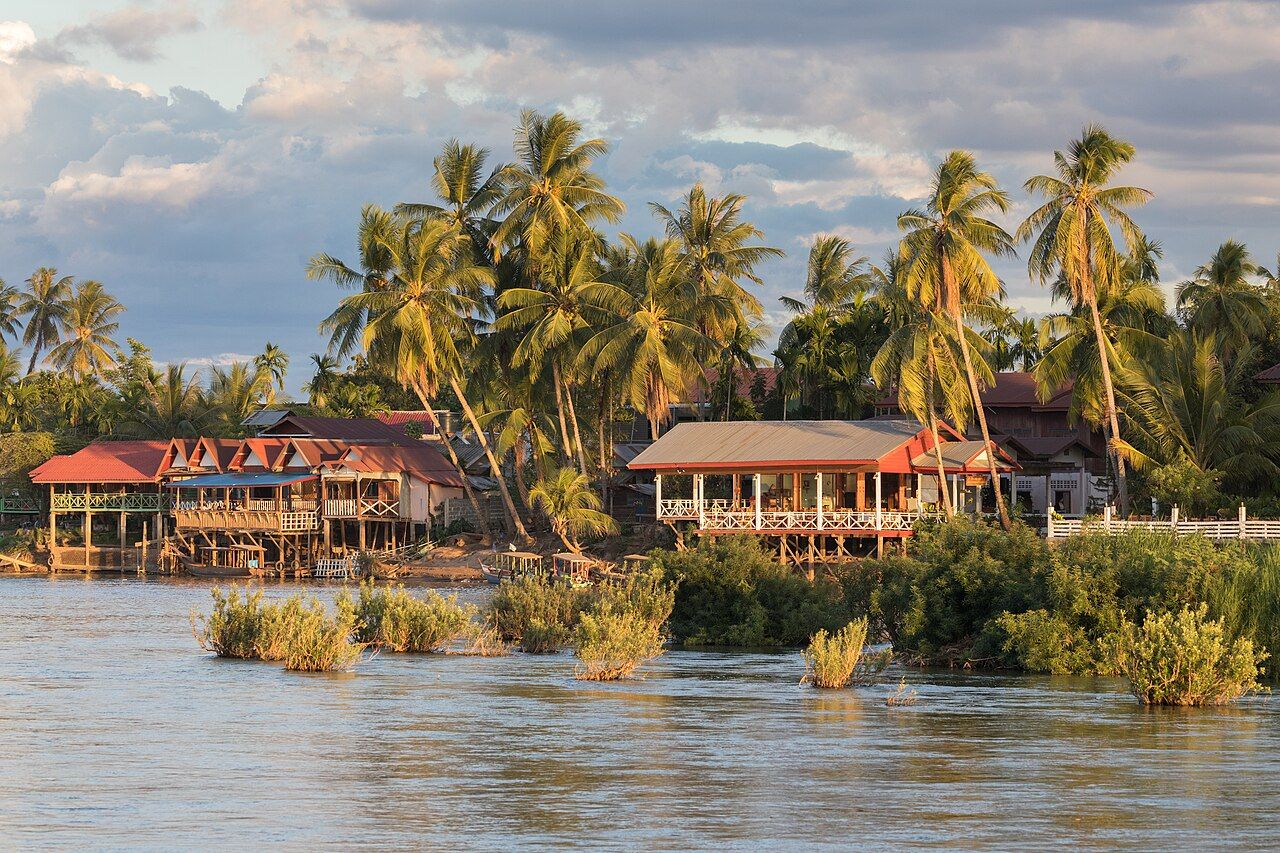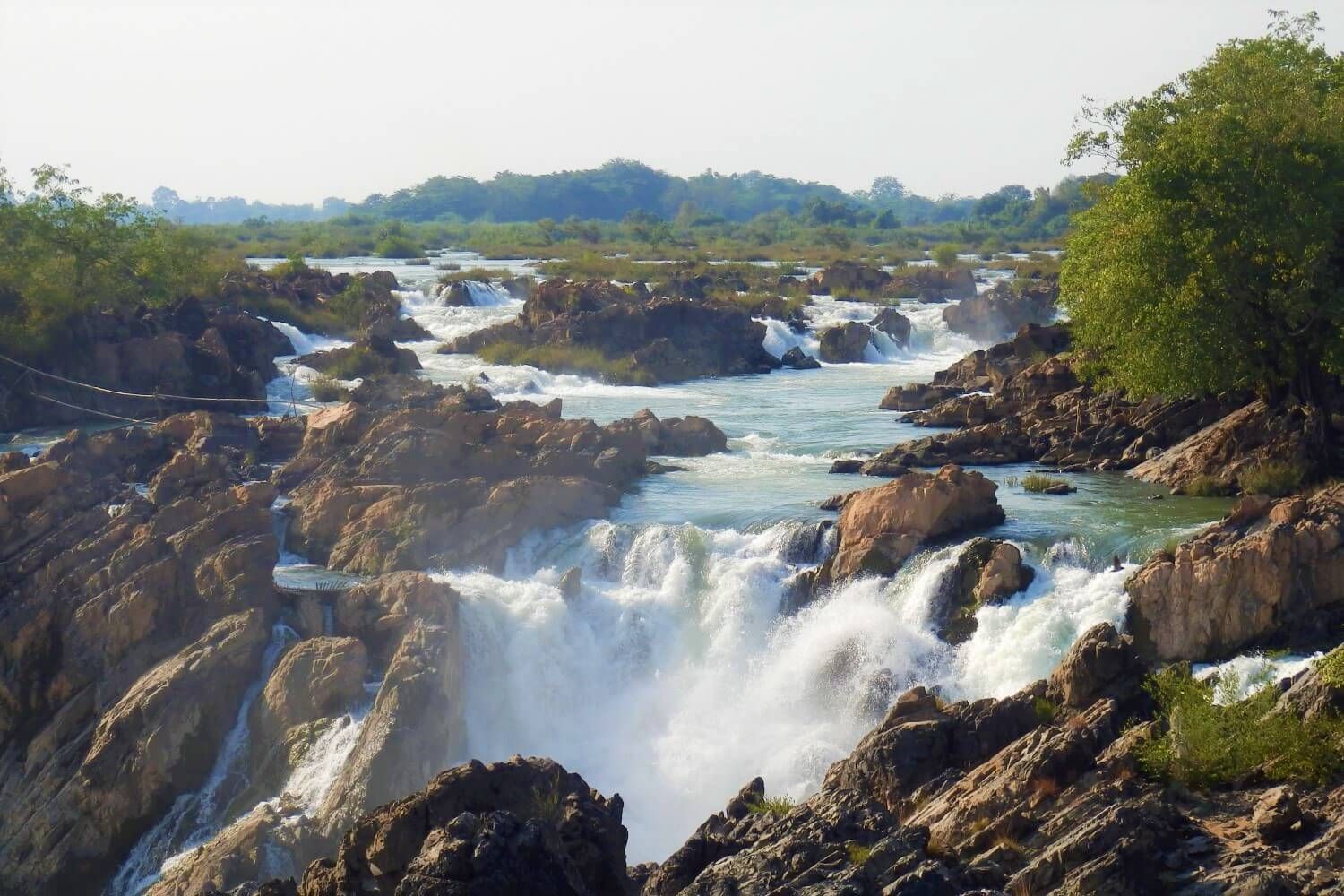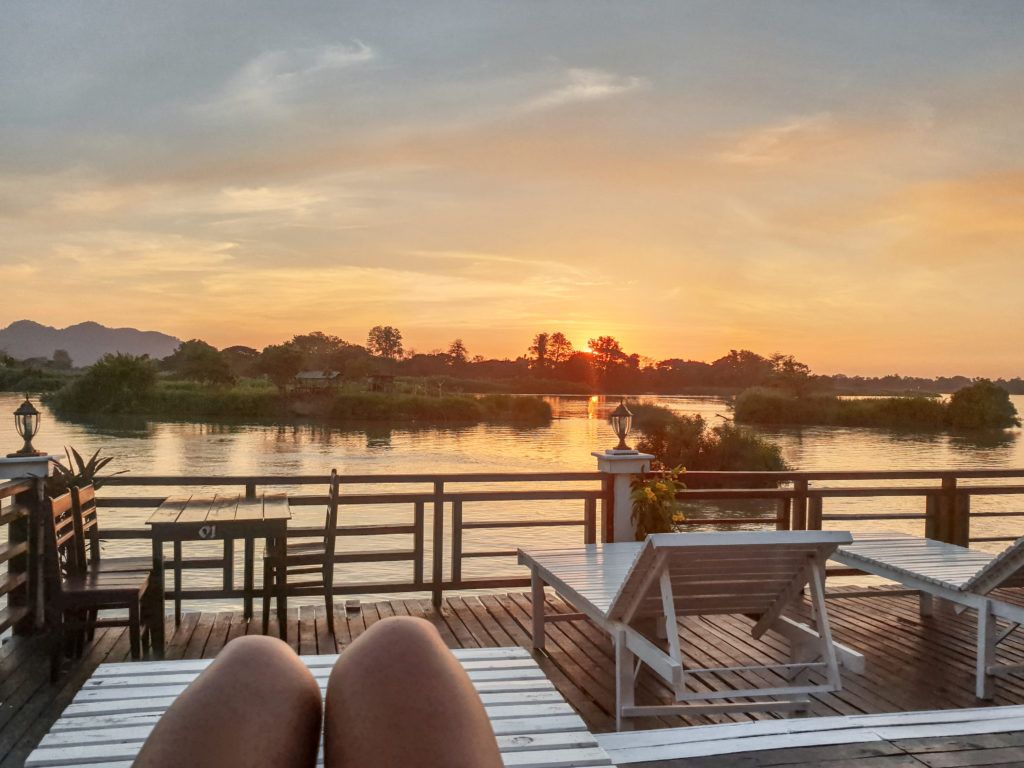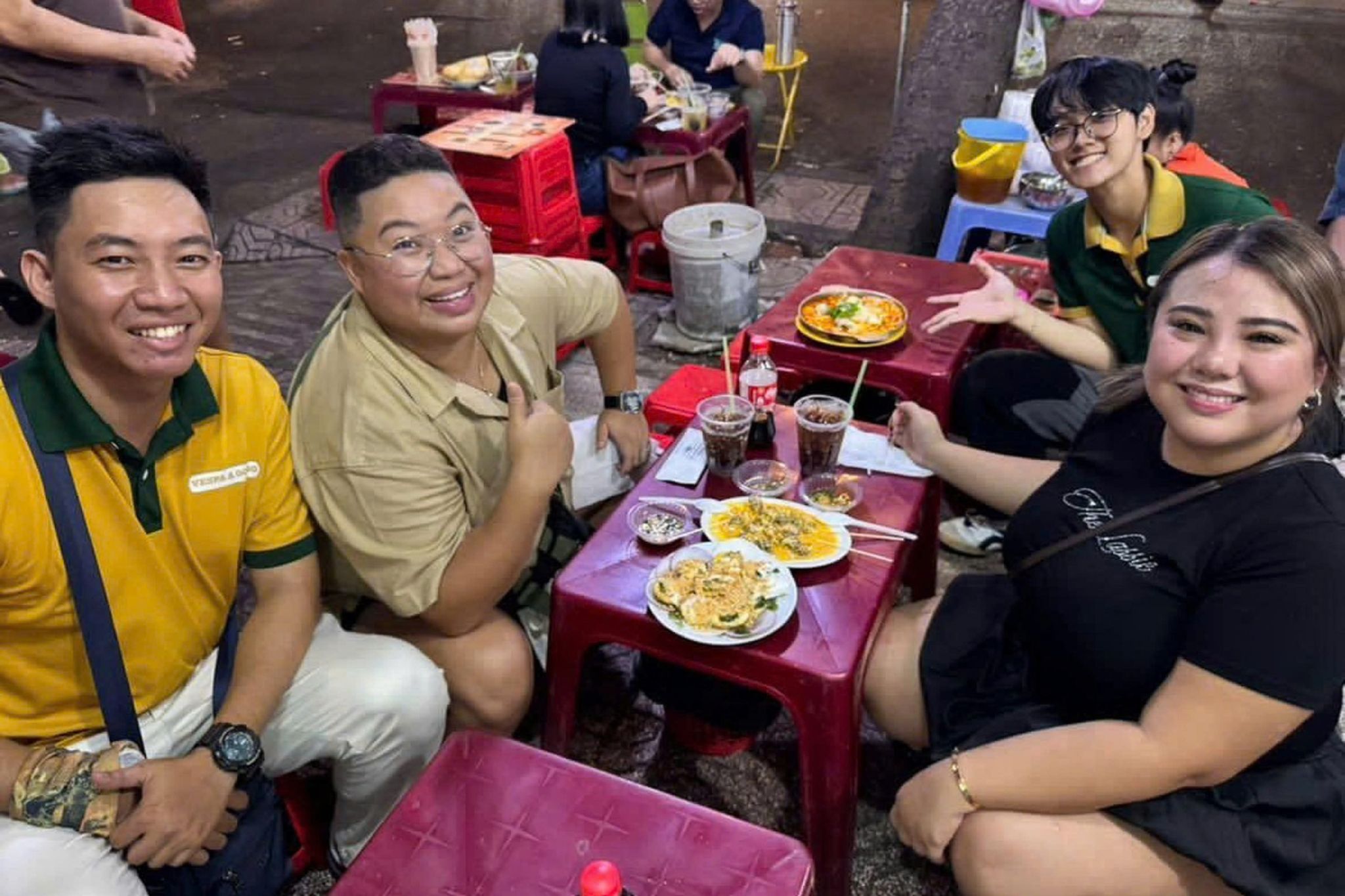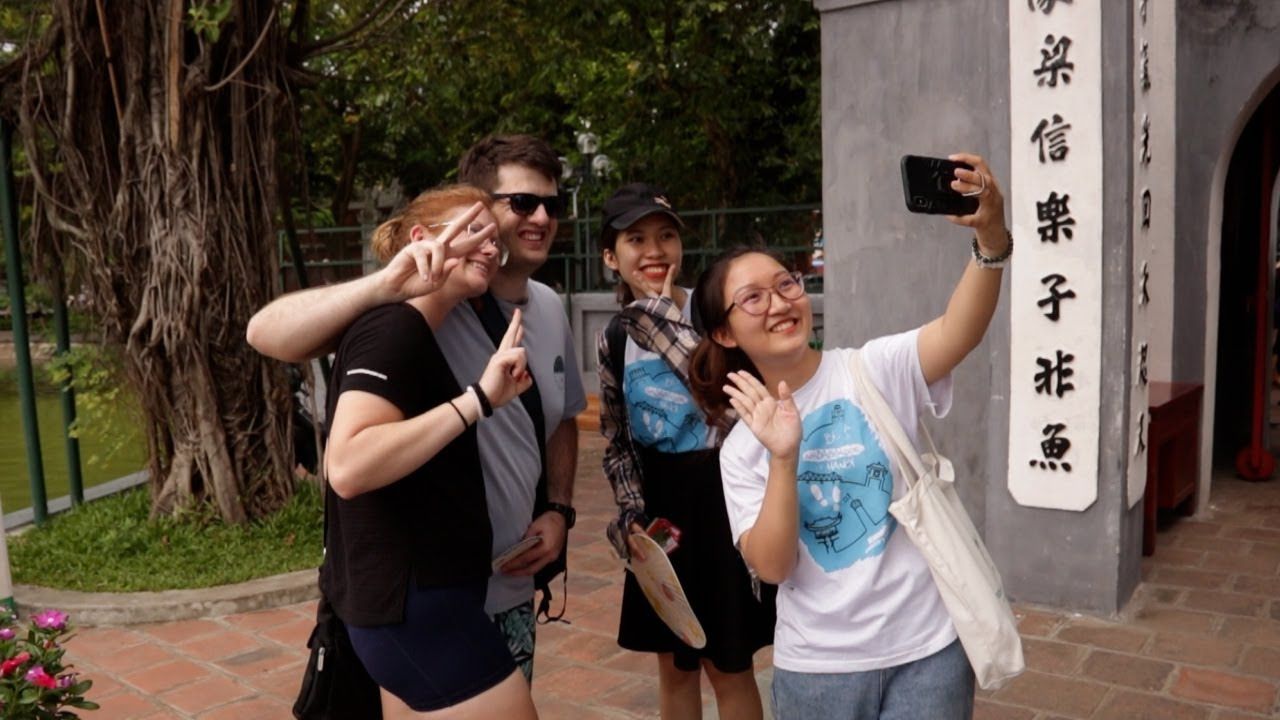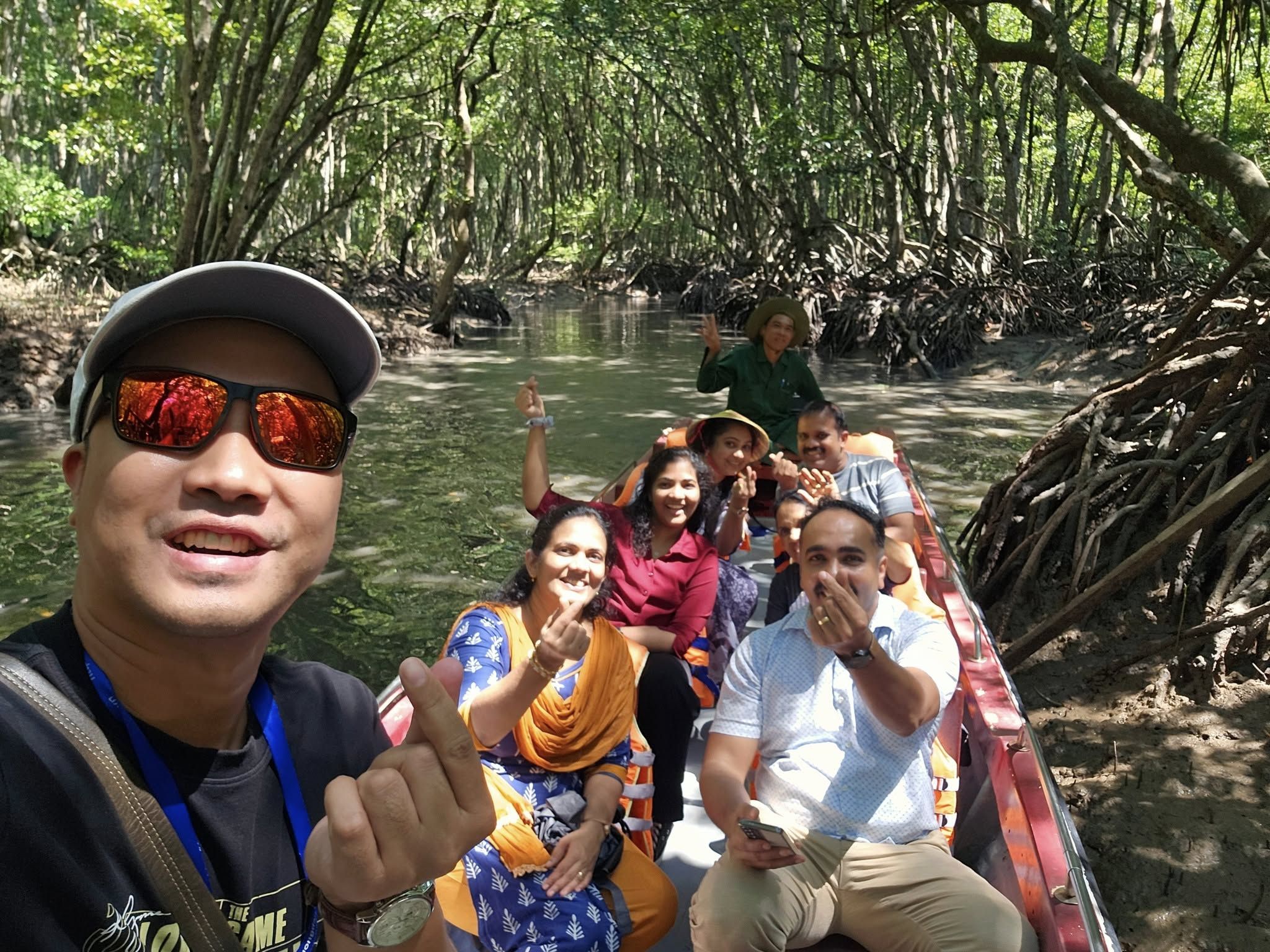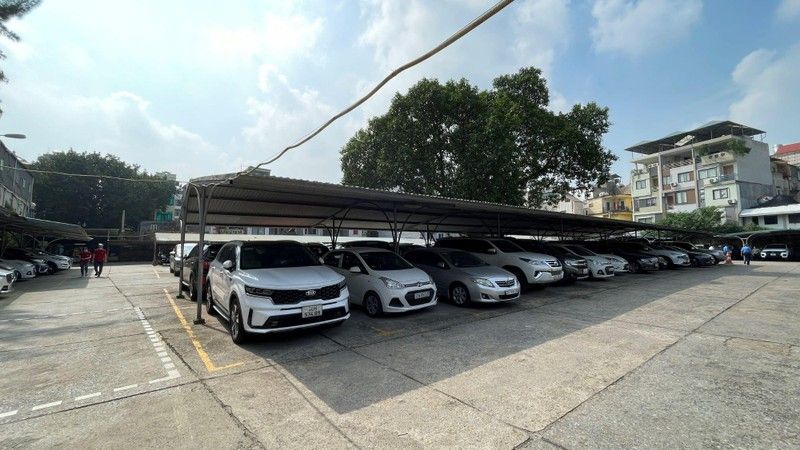
Đã đăng 2 tuần trước
Bạn đang là Hướng dẫn Viên Du Lịch? Bấm vào đăng ký, khởi tạo tài khoản trên Huongdanviendulich.vn để nhận tour ngay!!!
Viết về Don Det Island vào lúc 15:03:29 , 07/08/25
lượt xem: 74Chia sẻ:
Travel Guide to Don Det Island, Laos
Introduction to Don Det Island
Don Det, part of the Si Phan Don (Four Thousand Islands) archipelago in southern Laos, is a serene island nestled in the Mekong River in Champasak Province. Known for its laid-back vibe, lush greenery, and rustic charm, Don Det is a haven for travelers seeking relaxation and a connection with nature. The island, alongside its neighbor Don Khon, is one of the most visited in the Si Phan Don region due to its blend of natural beauty, affordable accommodations, and unique activities. The name "Si Phan Don" translates to "Four Thousand Islands," referring to the myriad of islands, islets, and sandbars formed by the Mekong’s wide expanse, stretching over 14 km at its broadest point. Don Det, with its small size and population, offers an authentic glimpse into rural Lao life while catering to budget travelers and adventurers.
MAP to Don Det : https://maps.app.goo.gl/43kk5KhpDGrRsXhu9
Historical Background and Formation
Geological Formation
Don Det, like the rest of Si Phan Don, was formed by the Mekong River’s complex network of channels, which split and weave around numerous islands during its flow through southern Laos. The Mekong’s seasonal fluctuations create a dynamic landscape, with islands emerging and submerging based on water levels. During the dry season (November to March), low water levels reveal cascades and waterfalls, such as the Somphamit Falls on Don Khon, while the rainy season (May to October) submerges smaller islets, creating a lush, verdant environment. This unique geography, with fertile soils and abundant water, has shaped Don Det’s ecosystem and way of life.
Historical Context
Historically, Don Det and the Si Phan Don region have been shaped by their strategic location along the Mekong, a vital trade and transport route connecting Laos, Cambodia, and beyond. The islands were part of the ancient Khmer Empire’s influence before becoming integral to Lao culture. During the French colonial period (1893–1953), the French attempted to navigate the Mekong’s rapids to establish trade routes, leaving behind remnants like the Don Khon railway, built to bypass unnavigable waterfalls. This narrow-gauge railway, now a historical attraction, connected Don Det and Don Khon, facilitating goods transport. The islands’ sparse population, primarily ethnic Lao and Khmer, relied on fishing, rice farming, and small-scale trade. Today, Don Det retains its rustic character, with minimal modern development, preserving its historical simplicity.
Development of Tourism
Tourism in Don Det began to flourish in the late 20th century as backpackers discovered the Si Phan Don archipelago. Initially a hidden gem, Don Det’s affordability, relaxed atmosphere, and natural beauty attracted budget travelers, particularly from the 1990s onward. The island’s tourism industry grew organically, with locals converting homes into guesthouses and small restaurants to cater to visitors. Unlike more developed destinations like Phuket or Bali, Don Det has remained relatively untouched, offering an authentic, low-key experience. The absence of high-end resorts and limited infrastructure has preserved its charm, appealing to travelers seeking sustainable, community-based tourism. In recent years, tourism has become a significant economic driver, with Don Det and Don Khon hosting the majority of the region’s accommodations and services. However, challenges like seasonal accessibility and limited electricity (available only since the early 2000s) keep development modest.
Tourism Activities
Don Det offers a range of activities catering to nature lovers, adventure seekers, and those looking to unwind. The island’s small size (approximately 8 km in circumference) makes it easy to explore by foot, bicycle, or kayak. Here are the key activities:
1. Cycling and Walking
- What to Expect: Rent a bicycle (around 10,000–20,000 LAK/day) and explore Don Det’s dirt paths, rice paddies, and small villages. The island’s flat terrain is ideal for leisurely rides, with scenic views of the Mekong and local life. A bridge connects Don Det to Don Khon, allowing visitors to cycle to attractions like Somphamit Falls or the old French railway.
- Highlights: Visit the Old French Railway Bridge, a colonial relic, or cycle to the southern tip of Don Det for sunset views over the Mekong.
2. Kayaking and Tubing
- What to Expect: Kayaking along the Mekong’s channels offers a close-up view of the island’s waterways and wildlife. Tubing, a relaxed activity, involves floating down the river in an inflatable tube, popular among backpackers. Tours often combine kayaking with dolphin-watching.
- Cost: Kayak rentals cost around 50,000 LAK/day; guided tours range from 150,000–250,000 LAK, depending on inclusions.
3. Dolphin Watching
- What to Expect: The endangered Irrawaddy dolphins, a rare freshwater species, inhabit the Mekong near Don Det and Don Khon. Guided boat tours (approximately 100,000 LAK/person) take visitors to spots near the Cambodia border for sightings, especially during the dry season when water levels are lower. Ethical operators ensure minimal disturbance to the dolphins.
- Tip: Early morning or late afternoon tours increase the chances of spotting dolphins.
4. Waterfall Visits
- What to Expect: The Somphamit Falls (Li Phi Falls) on Don Khon, accessible via a short bike ride or walk from Don Det, is a highlight. These cascading falls, formed by the Mekong’s rocky channels, are best viewed in the dry season. Entrance costs around 25,000 LAK.
- Other Waterfalls: The nearby Khone Phapheng Falls, one of Southeast Asia’s largest by volume, is a 30-minute boat or tuk-tuk ride away.
5. Cultural Experiences
- What to Expect: Engage with local Lao culture through village visits, where you can observe rice farming, fishing, and traditional weaving. Some guesthouses organize cultural exchanges, such as cooking classes or visits to local temples like Wat Khon Tai on Don Khon.
- Festivals: If visiting during Lao New Year (Pi Mai) in April, expect vibrant celebrations with water fights and community feasts.
6. Relaxation and Sunset Viewing
- What to Expect: Don Det’s slow-paced vibe is perfect for unwinding. Many guesthouses and restaurants offer hammocks and riverside seating for sunset views. The western side of the island, particularly near Hua Det village, is ideal for watching the Mekong’s golden hues at dusk.
Accommodations
Don Det’s accommodations are budget-friendly, primarily consisting of guesthouses, bungalows, and small hostels. Most are family-run, offering basic amenities like fans, mosquito nets, and shared or private bathrooms. Electricity is reliable but may be limited in remote areas. Here are some options:
- Budget Guesthouses (50,000–150,000 LAK/night):
- Crazy Gecko Guesthouse: Riverside bungalows with hammocks and a relaxed vibe. Known for friendly staff and sunset views.
- Mama Leuah Guesthouse: Simple wooden bungalows with riverfront access, ideal for families or groups.
- Mid-Range Options (150,000–300,000 LAK/night):
- Little Eden Guesthouse: Offers slightly upscale rooms with air conditioning and hot showers, a rarity on Don Det.
- Don Det Bungalows: Comfortable rooms with private balconies overlooking the Mekong.
- Hostels for Backpackers (30,000–80,000 LAK/bed):
- Happy Bar Hostel: Popular among young travelers, with dorm beds and a lively bar atmosphere.
- Easy Go Hostel: Affordable dorms and a communal area for socializing.
Tips:
- Book in advance during peak season (November–March) via platforms like Booking.com or directly with guesthouses.
- Wi-Fi is available in most accommodations but can be slow or unreliable.
Dining and Food
Don Det’s dining scene is simple yet delightful, focusing on Lao cuisine and traveler-friendly options. Restaurants are concentrated in the main villages of Ban Hua Det and Ban Don Det, offering affordable meals (20,000–50,000 LAK/dish). Key dishes and dining experiences include:
- Lao Cuisine:
- Laap: A spicy minced meat or fish salad with herbs, a Lao staple.
- Sticky Rice: Served with most meals, often paired with grilled fish or chicken.
- Tam Mak Houng: Spicy papaya salad, customizable for heat levels.
- Western Options: Many restaurants cater to tourists with pizza, burgers, and pancakes, though quality varies.
- Riverside Dining: Eateries like The Garden Restaurant and Jasmine Restaurant offer Mekong views and fresh seafood, including grilled river fish.
- Street Food and Markets: Small stalls in Ban Hua Det sell noodle soups, spring rolls, and fruit shakes. Night markets are limited, but some guesthouses host communal dinners.
- Drinks: Local Beerlao is widely available (10,000–20,000 LAK), alongside Lao-Lao (rice whiskey) and fresh coconut water.
Tips:
- Vegetarian and vegan options are available but limited; confirm with restaurants in advance.
- Bring cash (Lao Kip), as ATMs are scarce, and card payments are rarely accepted.
Practical Travel Information
Best Time to Visit
- Dry Season (November–March): Cool, dry weather (20–30°C) ideal for cycling, kayaking, and waterfall visits. Peak season means more crowds but vibrant energy.
- Rainy Season (May–October): Lush greenery and fewer tourists, but heavy rains can make roads muddy and some activities less accessible.
Getting to Don Det
- From Pakse: Take a bus or minivan (3–4 hours, 50,000–100,000 LAK) to Ban Nakasang, then a short boat ride (10–15 minutes, 20,000–30,000 LAK) to Don Det.
- From Vientiane or Luang Prabang: Overnight buses to Pakse (12–15 hours) connect to Don Det. Alternatively, fly to Pakse’s airport and transfer by road.
- From Cambodia: Boats from Stung Treng or Kratie connect to Don Det, often including dolphin-watching stops (2–3 hours, 100,000–200,000 LAK).
Getting Around
- Bicycles: Widely available for rent, perfect for exploring the island.
- Tuk-Tuks: Limited but available for short trips or transfers to Don Khon.
- Boats: Essential for inter-island travel or tours to waterfalls and dolphin spots.
Tips for Travelers
- Visa: Most nationalities can enter Laos visa-free for 15–30 days or obtain a visa on arrival at border crossings. Check requirements for your country.
- Currency: Lao Kip (LAK) is the primary currency. Exchange money in Pakse or Ban Nakasang, as Don Det lacks ATMs.
- Language: Lao is the local language, but English is widely spoken in tourist areas. Basic Lao phrases like “Sabaidee” (hello) are appreciated.
- Sustainability: Support local businesses and avoid activities that harm the environment or wildlife, such as unregulated dolphin tours.
- Health: Bring mosquito repellent and stay hydrated. Medical facilities are limited; the nearest hospital is in Pakse.
Why Visit Don Det?
Don Det offers a rare blend of tranquility, affordability, and adventure. Its unspoiled landscapes, rich cultural heritage, and welcoming locals make it a standout destination in Southeast Asia. Whether you’re cycling through rice fields, kayaking the Mekong, or simply relaxing in a hammock, Don Det promises an unforgettable escape from the hustle of modern life. Plan your trip with Huongdanviendulich.vn for tailored travel advice and seamless bookings to explore this Lao gem!

